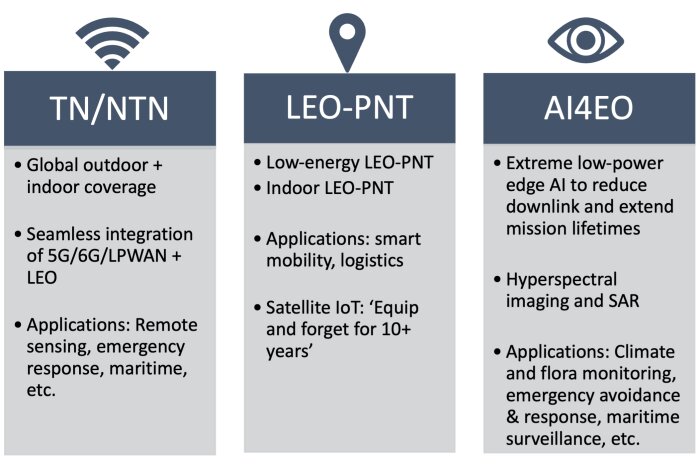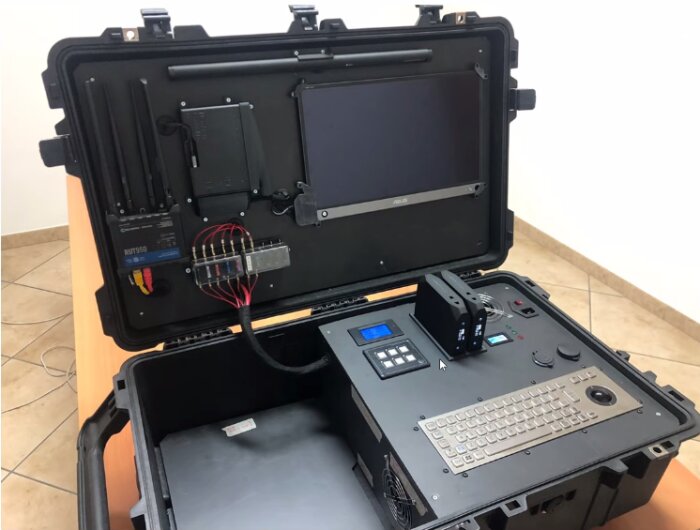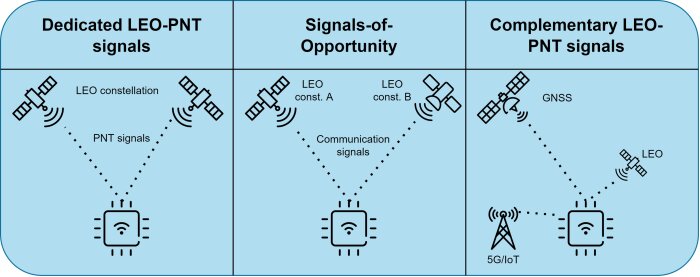At imec-IDLab, the space research track focuses on 3 pillars:
- Communication: Hybrid communication between Terrestrial and Non-Terrestrial Networks. This involves the seamless integration of LPWAN, 5G, 6G and beyond with LEO satellites. Therefore, we leverage our expertise in terrestrial wireless connectivity and Artificial Intelligence.
- Localization: Positioning, Navigation and Timing with Low Earth Orbit satellites (LEO-PNT). We focus on low-energy, indoor and outdoor satellite positioning using novel LEO-PNT technologies and techniques. We collaborate with both Flemish and international partners in multiple LEO-PNT projects coordinated by Flanders Space/VRI and ESA, respectively.
- Earth Observation: Applying Artificial Intelligence on the edge (Edge-AI) onboard Earth Observation (EO) satellites. This includes software-based fault tolerance for extreme edge systems, as well as onboard adaptive systems for extended mission lifetimes of micro-, cube-, and small-sats.
-
 3 pillars of space research
3 pillars of space research
A selection of projects
- ESA-project: “Breadboarding of innovative user technologies for very low energy positioning” (BreadBoardPos)
Consortium: OHB Digital Solutions (Austria), Peopletrust (Italy), imec-IDlab
Traditional GNSS receivers generally consume too much energy for IoT applications. The objective of this project was to compute a location estimate of an IoT device with as little energy as possible. Therefore, terrestrial LPWAN technologies are combined with novel GNSS techniques (e.g., Snapshot GNSS) and LEO-PNT (e.g., Doppler positioning). After the design and implementation of a breadboard integrating these technologies, it was shown that interoperability is key to providing a location estimate at any time and at any place on Earth.
-
 BreadBoardPos
BreadBoardPos
- ESA-project: “Low Earth Orbit Navigation Analysis, Reporting and Design” (LEONARD)
Consortium: imec-IDlab
As a follow-up on the BreadBoardPos project, ESA requested IMEC to survey, analyze, and simulate state-of-the-art LEO-PNT technologies and techniques. Extensive MATLAB simulations included link budget analyses, receiver design trade-offs, and different use case scenarios for LEO-PNT. Moreover, techniques such as pseudoranging and Doppler PNT were compared in terms of PNT performance.
-
 LEONARD
LEONARD
- Flanders Space / VRI ICON: “Mastering Onboard Vision Intelligence and Quality” (MOVIQ)
Consortium: MAGICS, OIP Space Instruments, VITO, imec, Redwire Space Europe
Press release: First Space ICON project 'MOVIQ' has officially started! - Flanders Space
MOVIQ proposes an artificial intelligence (AI)-accelerated flexible and adaptable remote-sensing imaging solution. The platform will feature multi-instrumentation support and onboard AI for application autonomy. A hyperspectral imaging application will showcase the performance, adaptability, bandwidth, latency, and resource consumption advantages of MOVIQ.
-
 MOVIQ
MOVIQ


